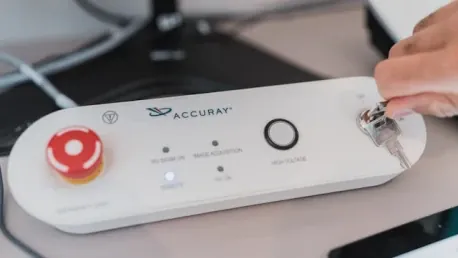Additive manufacturing (AM), commonly referred to as 3D printing, is rapidly revolutionizing the medical device industry by offering unprecedented levels of customization, design freedom, and rapid production capabilities. This cutting-edge technology has reshaped the landscape of medical device design and manufacturing, enabling the creation of personalized, patient-specific devices that are more effective and efficient than their traditionally manufactured counterparts. However, the road to fully integrating AM into the medical device industry is not without challenges, including navigating stringent regulatory compliance, ensuring material consistency, and overcoming regional support issues. This article explores how additive manufacturing is transforming the medical device industry, highlighting both its transformative advantages and the significant hurdles it faces.
Customization and Mass Personalization
Additive manufacturing is at the forefront of mass customization, allowing for the production of unique, patient-specific medical devices on a scale that traditional manufacturing methods simply cannot match. This capability is particularly beneficial in fields such as orthodontics and orthopedics, where the need for personalized devices like aligners, insoles, braces, and implants is critical. The process begins with a detailed 3D scan of the patient, which is then used to create precise CAD models. These models are readily translatable to 3D printing, ensuring a perfect fit and improved patient outcomes.
The ability to produce customized devices efficiently and quickly is a game-changer for the medical industry. Traditional manufacturing methods often involve lengthy, labor-intensive, and costly processes to create custom parts. In contrast, additive manufacturing can produce these parts rapidly, reducing lead times and significantly lowering costs. This is especially crucial for patients who require urgent medical attention, as it allows for faster treatment and shorter recovery times. Moreover, the ability to produce tailor-made devices enables healthcare providers to offer solutions that are specifically designed to meet the unique anatomical needs of individual patients, leading to better overall results.
Design Freedom and Geometry Capabilities
One of the most significant advantages of additive manufacturing is the unprecedented design freedom it offers, enabling the creation of intricate and complex geometries that would be impossible or prohibitively expensive to produce using traditional manufacturing methods such as CNC milling. This capability is particularly advantageous for medical devices, which often require lightweight, strong, and biocompatible implants.
Complex lattice structures, which are difficult to achieve using conventional methods, can be effortlessly produced with AM. These structures not only reduce the weight of implants but also enhance their mechanical properties. For instance, orthopedic implants featuring lattice structures can promote better bone integration and reduce the risk of implant failure. Additionally, the flexibility of design afforded by AM allows for the optimization of device geometry to improve functionality and patient comfort. This level of design innovation is transforming the way medical devices are developed and manufactured, paving the way for the creation of more advanced and effective medical solutions.
Reduced Lead Times and On-Demand Production
The rapid production capabilities of additive manufacturing significantly cut down lead times, allowing manufacturers to meet urgent patient needs more swiftly. On-demand production eliminates the necessity for large inventories, enabling prompt manufacturing of medical devices as required. This is especially crucial for time-sensitive medical applications, such as surgical guides and emergency implants.
On-demand production also offers substantial economic benefits by reducing storage costs and minimizing waste. Traditional manufacturing often involves producing large quantities of parts, many of which may never be used, leading to inefficiencies and increased costs. In contrast, additive manufacturing allows for the production of parts only when they are needed, ensuring that resources are used efficiently. This not only saves money but also aligns with sustainable manufacturing practices by minimizing material waste. The ability to produce devices on demand also means that healthcare providers can offer more timely and effective treatments, ultimately improving patient care and outcomes.
Perspectives from Industry Practitioners
Restor3D
Founded in 2017, Restor3D is a company that aims to leverage 3D printing technology to enhance surgical devices and orthopedic implants. Their commitment to using additive technology sets them apart from competitors that offer standardized implant sizes. According to Mateo Garcia, their VP of Operations, the use of AM ensures improved mechanical performance and reduces production steps, contributing to a better experience for both surgeons and patients. Restor3D’s approach highlights the potential of AM to revolutionize the medical device industry by focusing on customization and leveraging the unique capabilities of 3D printing. By offering products tailored to individual patient needs, they not only improve patient outcomes but also set a new standard for the industry.
Korthotics
Operating out of New South Wales, Australia, Korthotics is a company that incorporates additive manufacturing for various products such as pediatric braces, surgical guides, and cranial helmets. Orthotist Victor Phan emphasizes that AM offers significant design flexibility, allowing the creation of intricate parts like cervical collars and cranial helmets using Selective Laser Sintering (SLS) technology. This flexibility is crucial for devices that require detailed and intricate designs. Korthotics’ use of AM demonstrates the technology’s versatility and its ability to produce a wide range of medical devices. By embracing 3D printing, they are able to offer innovative solutions that meet the specific needs of their patients, ultimately enhancing patient care and positioning Korthotics as a leader in the field of medical device manufacturing.
Challenges in Additive Manufacturing
Regulatory Compliance
Regulatory compliance is one of the most substantial challenges facing additive manufacturing in the medical device industry. In the USA, the FDA’s stringent regulations make the approval of new materials and processes lengthy and complex. The medical sector’s cautious approach towards new materials, despite their potential advantages, means extensive validation is required before implementation. Mateo Garcia emphasizes that the regulatory burden is comparable only to industries like aerospace, requiring high proof standards for both devices and manufacturing methods.
This regulatory landscape can slow down the adoption of new technologies and materials, hindering innovation. However, it is essential to ensure patient safety and maintain high standards of quality. Navigating these regulations requires a deep understanding of the approval process and a commitment to rigorous testing and validation. Companies must be prepared to invest time and resources into meeting these requirements, which can be a significant barrier for smaller firms and startups looking to enter the market.
Material Consistency and Vendor Dependency
Another critical challenge in additive manufacturing is ensuring material consistency and managing vendor dependency. Manufacturers heavily rely on AM vendors for the supply of materials, and any changes made by vendors can disrupt the production process. Such modifications necessitate revalidation, which is time-consuming and costly. Victor Phan notes that consistency and reliability from suppliers are vital for successful manufacturing, emphasizing the importance of maintaining strong communication and partnerships with dependable vendors.
To mitigate these challenges, companies must establish rigorous quality control processes and maintain robust relationships with their suppliers. This includes working closely with vendors to ensure material consistency and proactively addressing any potential issues that may arise. By doing so, manufacturers can minimize disruptions and maintain the high standards required for medical device production. Additionally, exploring alternative suppliers and materials can provide a level of flexibility and reduce the risk of dependency on a single source.
Future Perspectives and Continued Evolution
Integration With Traditional Manufacturing
While additive manufacturing offers numerous benefits, it is unlikely to entirely replace traditional manufacturing processes like milling and injection molding. Instead, AM serves as a complementary tool, particularly for parts that require intricate geometries or individualized designs. Traditional manufacturing techniques still hold value for producing parts that need polished or ground surfaces and for large-scale production runs where AM may not be cost-effective.
By integrating AM with traditional manufacturing methods, companies can leverage the strengths of both approaches to create high-quality medical devices. For example, AM can be used to produce complex, customized components, while traditional methods can be employed for simpler parts that require high precision and surface finishes. This hybrid approach allows manufacturers to optimize their production processes, improve efficiency, and reduce costs.
Focus Areas for Future Investment
As the medical device industry continues to evolve, companies are exploring new areas for investment and innovation in additive manufacturing. For instance, Korthotics plans to expand into large device production by leveraging technologies such as Fused Filament Fabrication (FFF) and Fused Granular Fabrication (FGF) with materials like polypropylene, which have established validation in the medical field. This strategic direction aligns with their goal of avoiding the complexities associated with other AM methods for producing large-scale parts.
Investing in research and development to explore new materials and techniques will be crucial for advancing the capabilities of AM in the medical device industry. Companies that stay at the forefront of these innovations will be better positioned to offer cutting-edge solutions and maintain a competitive edge in the market.
Educational Outreach and Industry Awareness
Both Restor3D and Korthotics are actively engaged in promoting education about the advantages of additive manufacturing among various stakeholders, including surgeons, hospitals, and end-users. Mateo Garcia emphasizes the importance of educating these groups about the benefits of AM, such as improved customization, design flexibility, and faster production times. By raising awareness and providing training, companies can accelerate the adoption of AM and help more healthcare providers recognize its potential.
Educational outreach is essential for fostering a greater understanding of AM and its applications in the medical device industry. By highlighting successful case studies and sharing best practices, companies can demonstrate the value of AM and encourage broader acceptance. Additionally, collaborative efforts with academic institutions, industry associations, and government agencies can help drive research, innovation, and regulatory alignment, further supporting the growth of AM in the medical sector.
Conclusion
Founded in 2017, Restor3D is an innovative company that utilizes 3D printing technology to enhance surgical devices and orthopedic implants. Their dedication to additive manufacturing technology distinguishes them from competitors who offer standardized implant sizes. According to Mateo Garcia, the VP of Operations, the use of additive manufacturing improves mechanical performance and streamlines production processes, ultimately providing a better experience for both surgeons and patients.
Restor3D’s approach emphasizes the transformative potential of additive manufacturing in the medical device field. By focusing on customization and the unique capabilities of 3D printing, they create products that are tailored to meet the specific needs of individual patients. This not only improves patient outcomes but also sets new benchmarks in the industry.
The company’s commitment to personalization and innovation highlights the significant impacts that 3D printing technology can have in advancing medical practices. Products designed for customized fit and function mean fewer post-surgical complications and faster recovery times, ultimately leading to greater patient satisfaction.
Furthermore, Restor3D’s pioneering efforts in utilizing advanced technologies are paving the way for future developments in medical devices. They show how the integration of cutting-edge technology can lead to substantial improvements in healthcare delivery. As the industry evolves, Restor3D aims to continue leading the charge towards more efficient, personalized medical solutions, enhancing the overall standard of care for patients.









